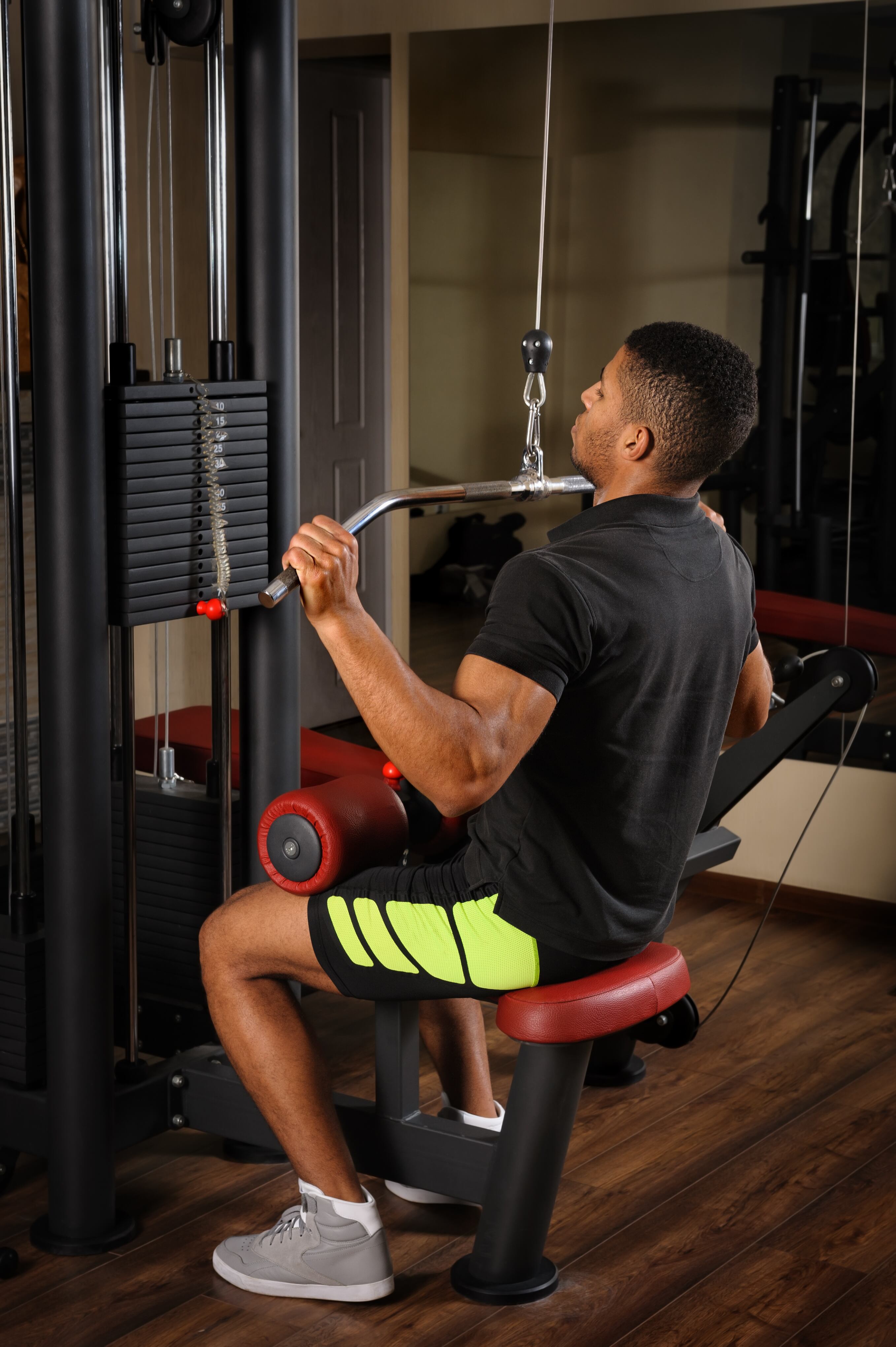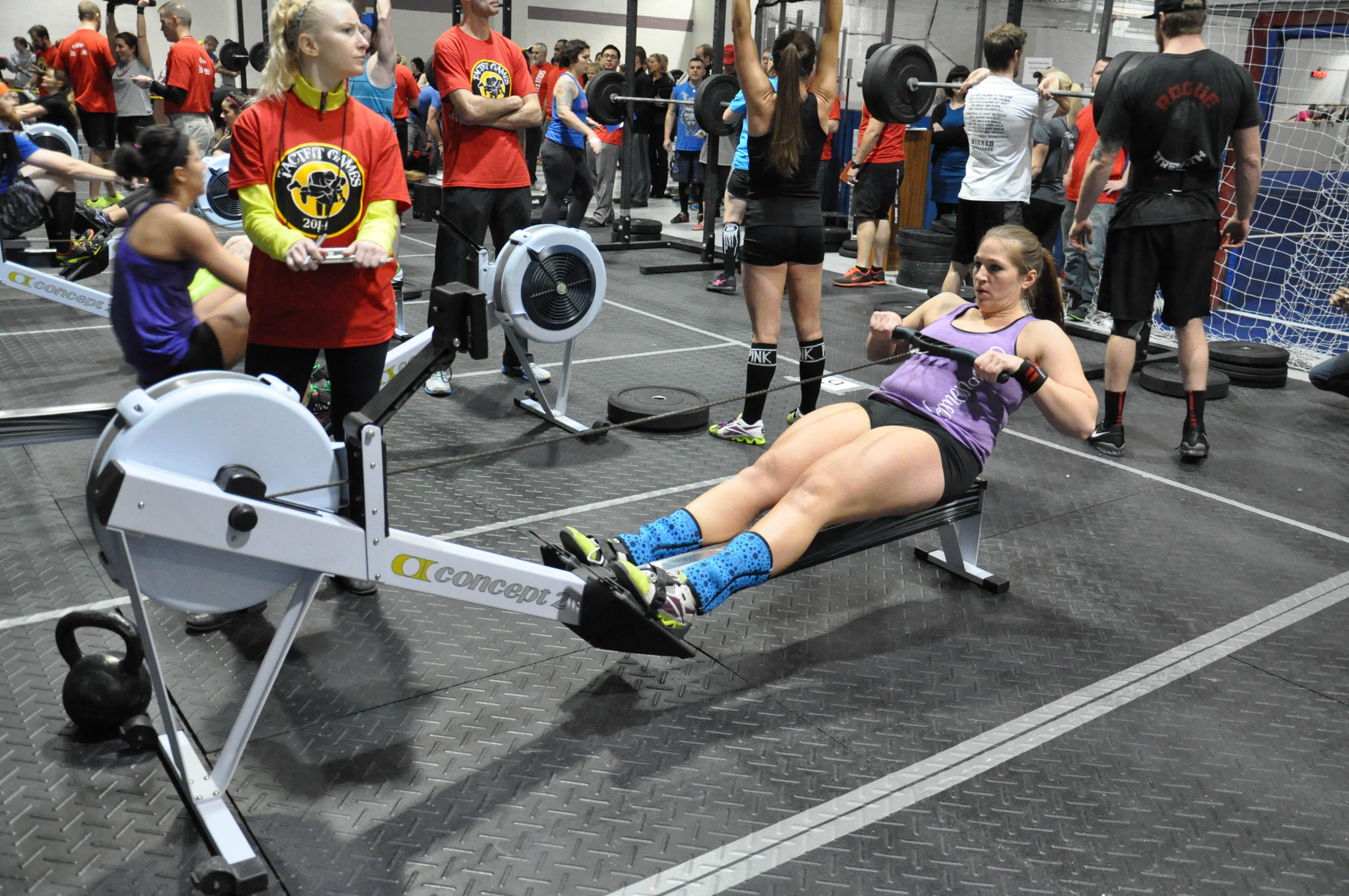In this article we move to the lower part of the back to discuss the "lats."
The latissimus dorsi originate in the lower half of your back along the spine and hip and insert to the inside of your upper arm. The picture that I paint for clients is that strong lats not only pull your upper arms from a raised position down to the sides of the torso but also act like a girdle for your back with the specific assignment of protecting the spinal column.
This relates to being able to pull your body in an upward direction, a climbing movement.
Pullups/chinups
I espouse the pullup/chinup. The pullup is executed with an overhand grip, and the chinup is done with an underhand grip. In either case, I do not let my clients "kip," which is to swing your body forward, using momentum to help drive your body up to the bar as you pull with your arms. The common thought is that chinups will target the bicep muscles and pullups the lats, and when viewing the exercise, that appears to be the case. But when researchers actually measured muscle activity, they found that the pullup targets the biceps and lats equally.
If you cannot do a body-weight pullup or chinup, use a Gravitron body assist machine in your gym or attach a band to the bar and use it as a spring by putting your foot in it and letting it assist you in the upward movement.
To become proficient in pullups/chinups, you have to do them on a daily basis. Start with assistance, if needed, but keep progressing as quickly as possible. Once you get to 10 body pullups, add weight in a vest. And remember — no kipping!
- Grasp the bar (overhand/underhand) and allow your feet to swing clear of the floor. If you are tall, this may require you to fold your legs behind you.
- Inhale and pull yourself up so that your chin is over the bar (some folks pull to chest level).
- Exhale at the top, and lower in a controlled movement.
To develop all the fibers in the lats, perform two pullup variations:
- Keeping your elbows in next to your body during the pullup movement contracts mainly the lateral fibers of the lats.
- Bringing the elbows back and the chest up during the pullup movement uses the upper and central fibers of the lats.

Lat pulldowns are the most common alternative to pullups/chinups.
Photo Credit: Serghei Starus, Getty Images/iStockphoto
This exercise is the one most used by those who do not want to or can't do a pullup/chinup. It is also one of the most incorrectly executed exercises. In the fitness center you will either see a built lat pull-down machine, or you will be able to set it up on a functional weight machine. Just ensure that the large bar with each end having a down-turned angle is clipped to the high pulley.
- Sit on a bench and grasp the bar with a wide overhand grip.
- Lean back just slightly and pull your shoulders down and together.
- Pull the bar down toward your chest in a smooth, controlled motion. This is where weight choice is so important. The great majority of people use a weight that is much too heavy, and they jerk the torso backward to start the weight down. They keep the speed at a high level and actually bounce the bar off the chest and continue the body jerk and speed throughout the exercise. It is actually a reverse kip, except the hips and lower body don't move.
- Raise the bar back to start position in a smooth, controlled movement. To get maximum results, you should take half again as long in the return phase as you did in the pull phase.

Angie Hobbs with Team Offutt Tactical Fitness rows for a calorie count during the 2014 TactFit Games at the Offutt Air Force Base, Neb., Field House.
Photo Credit: 2nd Lt. Carly A. Costello/Air Force
Seated rows
The Concept2 rower is built for this exercise, or you can sit on the floor with your feet braced against a pair of heavy weight plates and then attach a V handle to the low pulley of a functional weight machine.
- Lean forward and gab the handle.
- Bring your back up straight, arms extended.
- Raise your chest, and then pull the handle into your sternum, pulling your elbows back as far as possible (try to crunch your shoulder blades).
- Return your arms to full extension, and repeat.
An alternate method entails pulling the handle to your sternum as you straighten your back and then bending forward as you return your arms to full extension. This helps develop back flexibility.
Stretching the lats
This stretch helps prevent the lats from tearing.
- With legs slightly apart, stand about 18-24 inches in front of a pole or the frame of a weight rack. Lean forward at the hips, and with one hand grasp the pole/weight frame with one hand about chin level.
- Place the other hand higher up on the pole/weight frame (above your head). Your body will be in a U shape.
- Push with the top hand and pull with the lower hand.
- Rotate the chest in the direction of the top hand.
- Repeat several times, then reverse the position of your hands and rotate your chest the opposite direction.
Bob Thomas is director of the Navy Wellness Center in Pensacola, Fla. Email him at jomof14@cox.net.





